Friday, August 4: After I finish eating the Kakinoha-zushi for lunch, I get on the bus to explore some of the Nara temples on the outskirts of the main temples.
Kasuga Taisha Shrine lies in a wooded area southeast of the main temples of Nara.

sake barrels at entrance to Kasuga Taisha Shrine

Nara’s deer
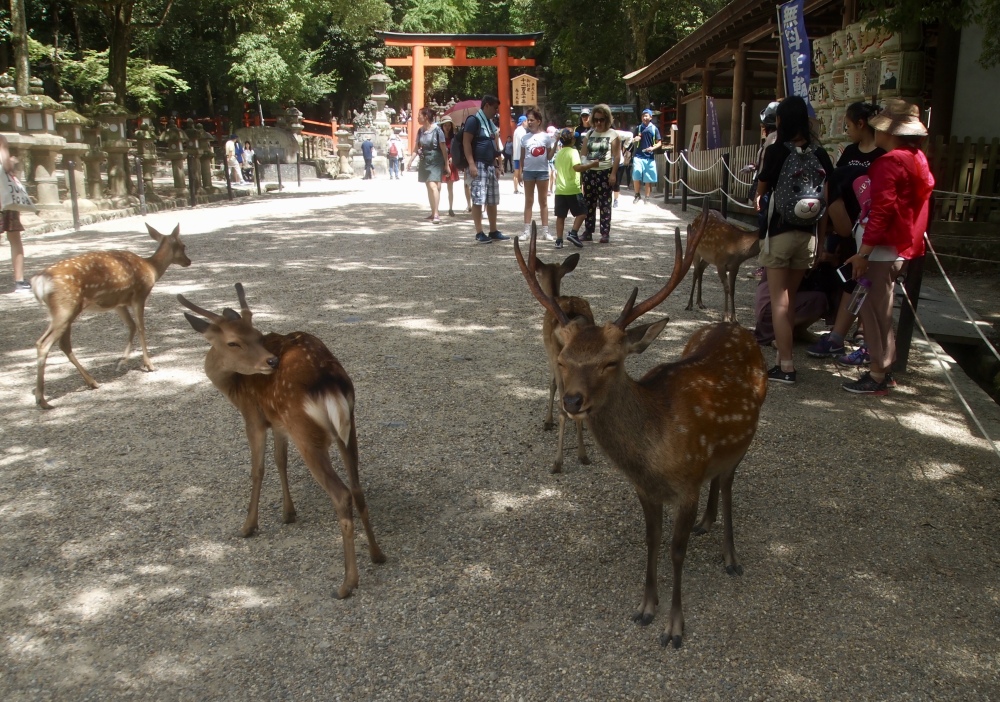
Nara’s deer
The paths to the shrine are lined with lanterns, and thousands more are in the shrine itself.

gate to Kasuga Taisha Shrine

lanterns and deer on the pathway to Kasuga Taisha Shrine
Kasuga Taisha Shrine is a Shinto shrine established in 768 and rebuilt several times over the centuries. It is the shrine of the Fujiwara family, a family of powerful regents in Japan. The Fujiwara dominated the Japanese politics of Heian period (794–1185) by marrying Fujiwara daughters to emperors. In this way, the Fujiwara gained influence over the next emperor who would, according to family tradition of that time, be raised in the household of his mother’s side and owe loyalty to his grandfather, according to Wikipedia: Fujiwara clan.

Kasuga Taisha Shrine
The origin of Kasuga Taisha Shrine dates back 1,300 years, when Takemikazuchi-no-mikoto, Japan’s most powerful deity, was invited to the sacred peak of Mt. Mikasa, a beautiful mountain behind this site, after the transfer of the national capital to what is now Nara City. The shrine grounds were completed in 768 with four altars for the deity already mentioned, plus a deity working for nation-building and a deity of wisdom and fortune-telling, as well as a Sun Goddess revered in the Middle Ages.

lanterns approaching Kasuga Taisha Shrine
The shrine has always received respect from citizens of Japan, even after the capital moved to Kyoto. Some 3,000 lanterns, stone or bronze, standing or hanging, were donated by worshipers since the Heian period in a show of their ardent faith.

Kasuga Taisha Shrine
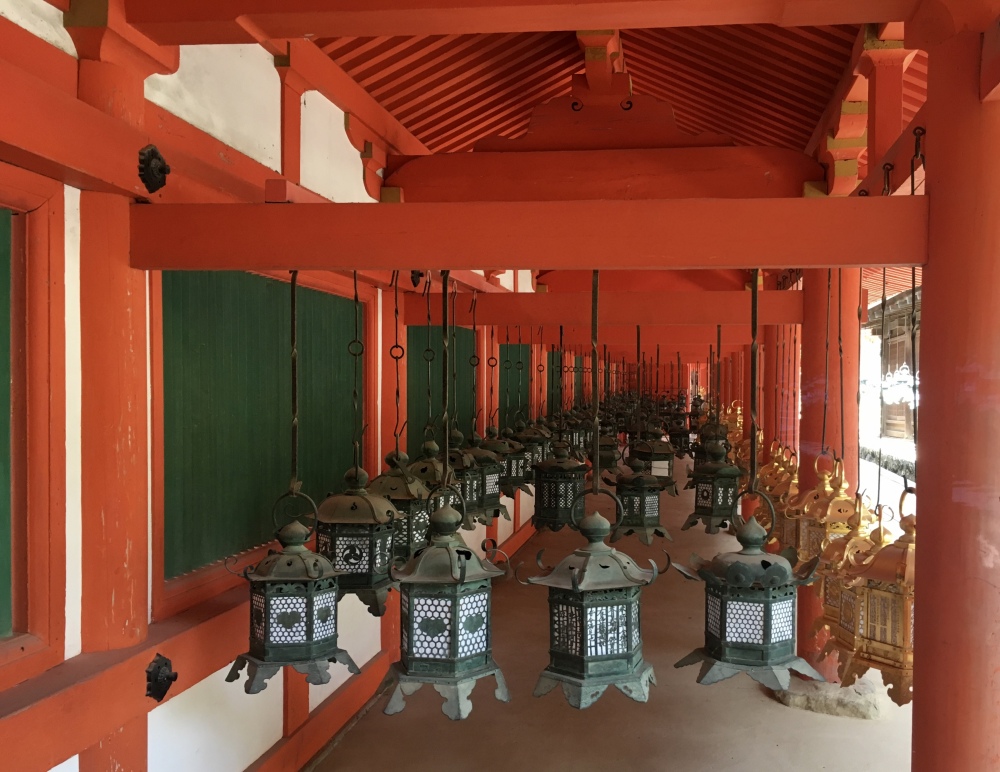
lanterns at Kasuga Taisha Shrine

ema at Kasuga Taisha Shrine
There seems to be no end to the lanterns at Kasuga Taisha Shrine.

stone lanterns at Kasuga Taisha Shrine
There is even a dark room with lit lanterns at the shrine.
The ema at Kasuga Taisha Shrine show the lanterns and the deer encountered all along the way.

ema at Kasuga Taisha Shrine
With numerous rituals, the is a place of prayers for peace and prosperity for everyone on earth.
The Nagi (podocarpus nagi) pure forest in Kasuga Taisha was designated as a National Monument in 1923. It’s known for its spread of upright, dense evergreens with pointed, leathery, dark green leaves arranged on stiff, symmetrical branches. The tree works very well as a screen, hedge, strong accent plant, or framing tree.
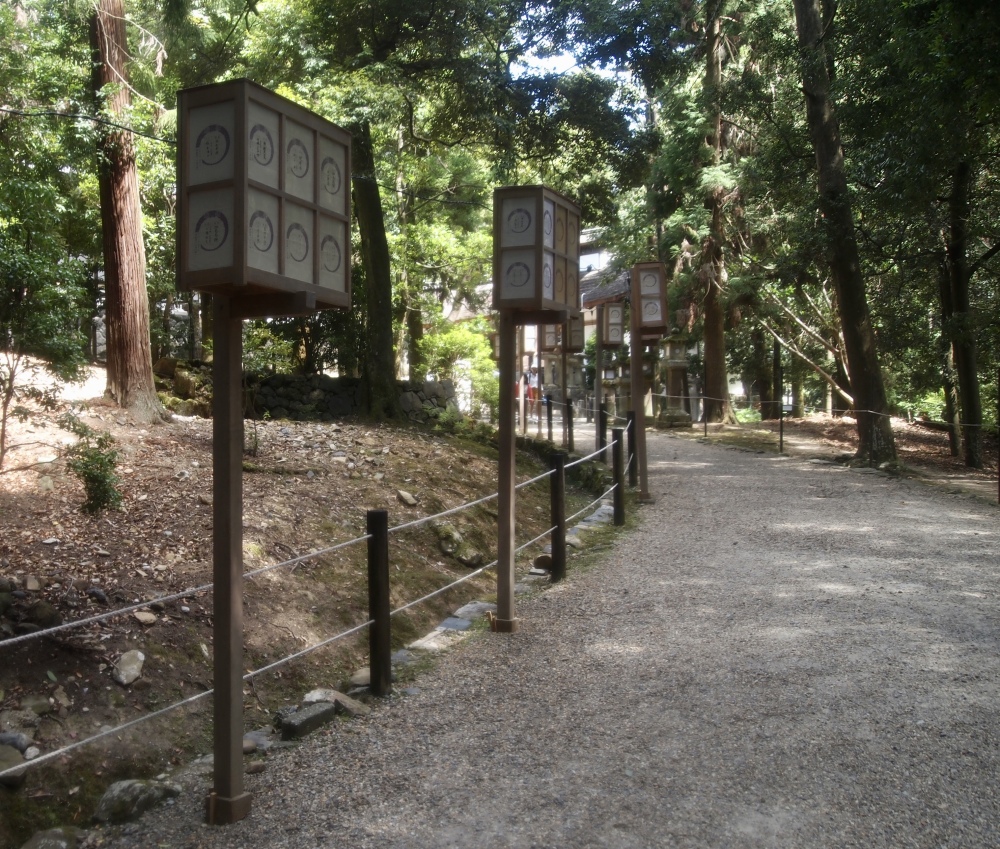
Nagi (pure) forest in Kasuga Taisha
Wakamiya Jinja Shrine is an altar dedicated to the Deity of Wakamiya. The annual festival of Kasuga-Wakamiya-Onmatsuri has been held from December 15-18 continually since 1136. These religious rites, designated as Significant Intangible Folk Cultural Assets by the central government, include prayers for reducing the spread of epidemics or famines, as well as a gorgeous procession of people in traditional costumes.

Wakamiya Jinja Shrine

wishes at Wakamiya Jinja Shrine

Wakamiya Jinja Shrine

Wakamiya Jinja Shrine

Wakamiya Jinja Shrine

Nagi (pure) forest in Kasuga Taisha
Wakamiya Jinja Shrine is also surrounded by moss-covered stone lanterns.

moss-covered stone lanterns
After visiting these two shrines, I take another bus to the famous Kohfukuji Temple. The original structure was built at the behest of the emperor Shōmu in 726 to speed the recovery of the ailing Empress Genshō.
This used to be the Fujiwara family temple. The temple was established in Nara at the same time as the capital was established here in 710. At the height of Fujiwara power, it is said the temple consisted of between 150 and 175 buildings. Fires and destruction as a result of power struggles have left only a dozen standing.
Today a couple of buildings of great historic value remain, including a five-story pagoda and a three-story pagoda.

Kohfukuji Temple
The “Eastern Golden Hall” or Tokondo, a 15th century building north of the Five-Story Pagoda, has a number of Buddhist statues including a large image of Yakushi Nyorai flanked by three Bodhisattva, the Four Heavenly Kings and the Twelve Heavenly Generals, plus a beautiful seated image of Yuima Koji (the Indian Buddhist sage Vimalakirti) (Japan Visitor). Sadly, no photography is allowed and I’m unable to find any postcards with the images.
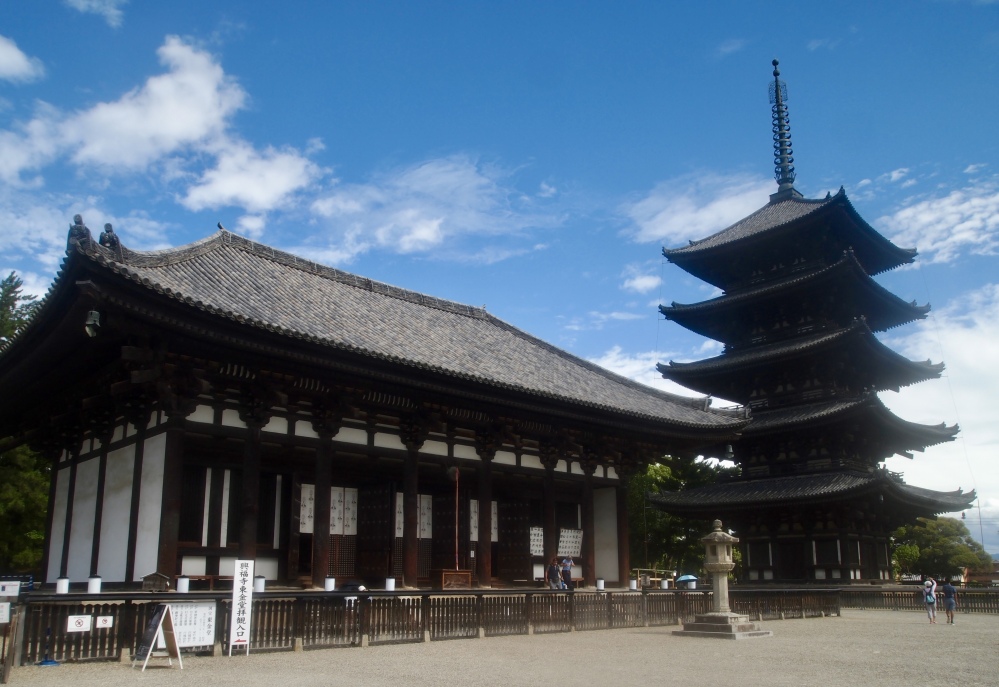
Kohfukuji Temple

Kohfukuji Temple
At 50 meters, the five-story pagoda is Japan’s second tallest, just seven meters shorter than the five-story pagoda at Kyoto’s Toji Temple. Kofukuji’s pagoda is both a landmark and symbol of Nara. It was first built in 730. The pagoda had burnt down no less than five times before the 15th century. It was most recently rebuilt in 1426.

Five Story Pagoda at Kohfukuji Temple
The Three-Story Pagoda dates from the early 12th century and houses some important Buddhist paintings.

Three-story Pagoda

inside the Three-Story Pagoda
I use the bathroom on the grounds of Kohfukuji Temple, where I find these funny signs.
After visiting Kohfukuji Temple, I make my way back through the congregations of deer on the way to my hotel.

Nara’s deer

Nara’s deer

Nara’s deer
I take a shower at the hotel before going out for dinner because I’m soaked in sweat. This heat and humidity in Japan is killing me!
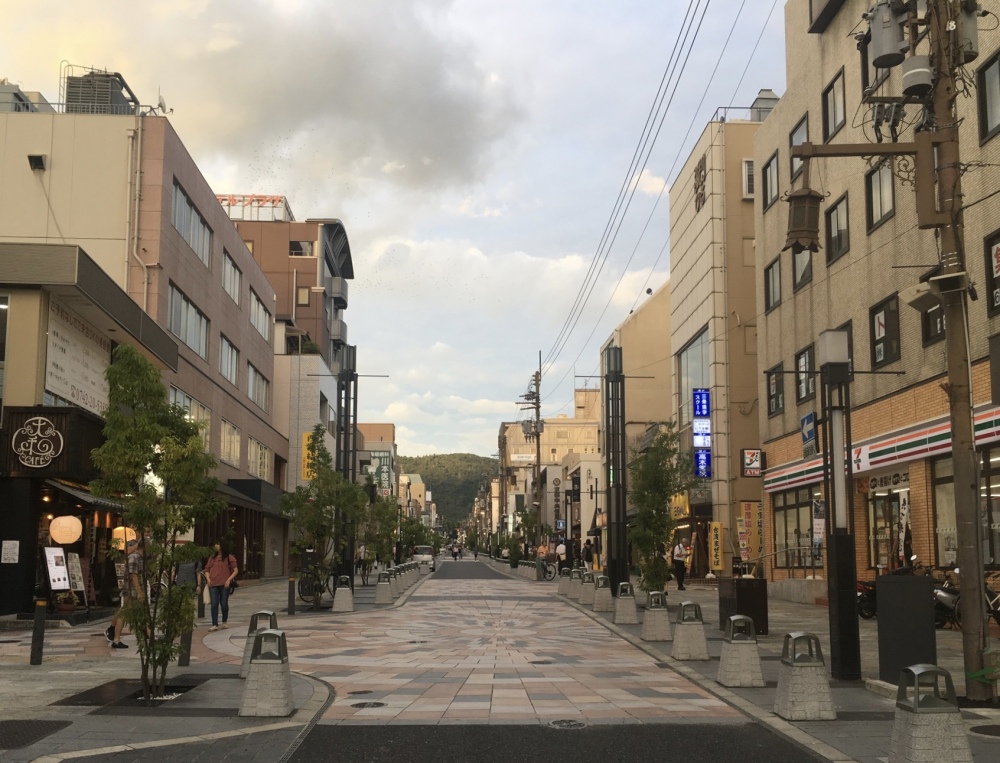
downtown Nara
I head to Manna Indian Restaurant, luckily air-conditioned.
I enjoy Gobi Masala and a huge paan, accompanied by a cold beer.

Gobi Masala
I walk back under gorgeous skies to my hotel.

Nara at sunset
Back at the hotel, I have a 30-minute massage followed by a great night’s sleep. Tomorrow morning, I’ll head to Koyasan, which will be quite a convoluted trip.
Steps today: 18,075 (7.66 miles).














































